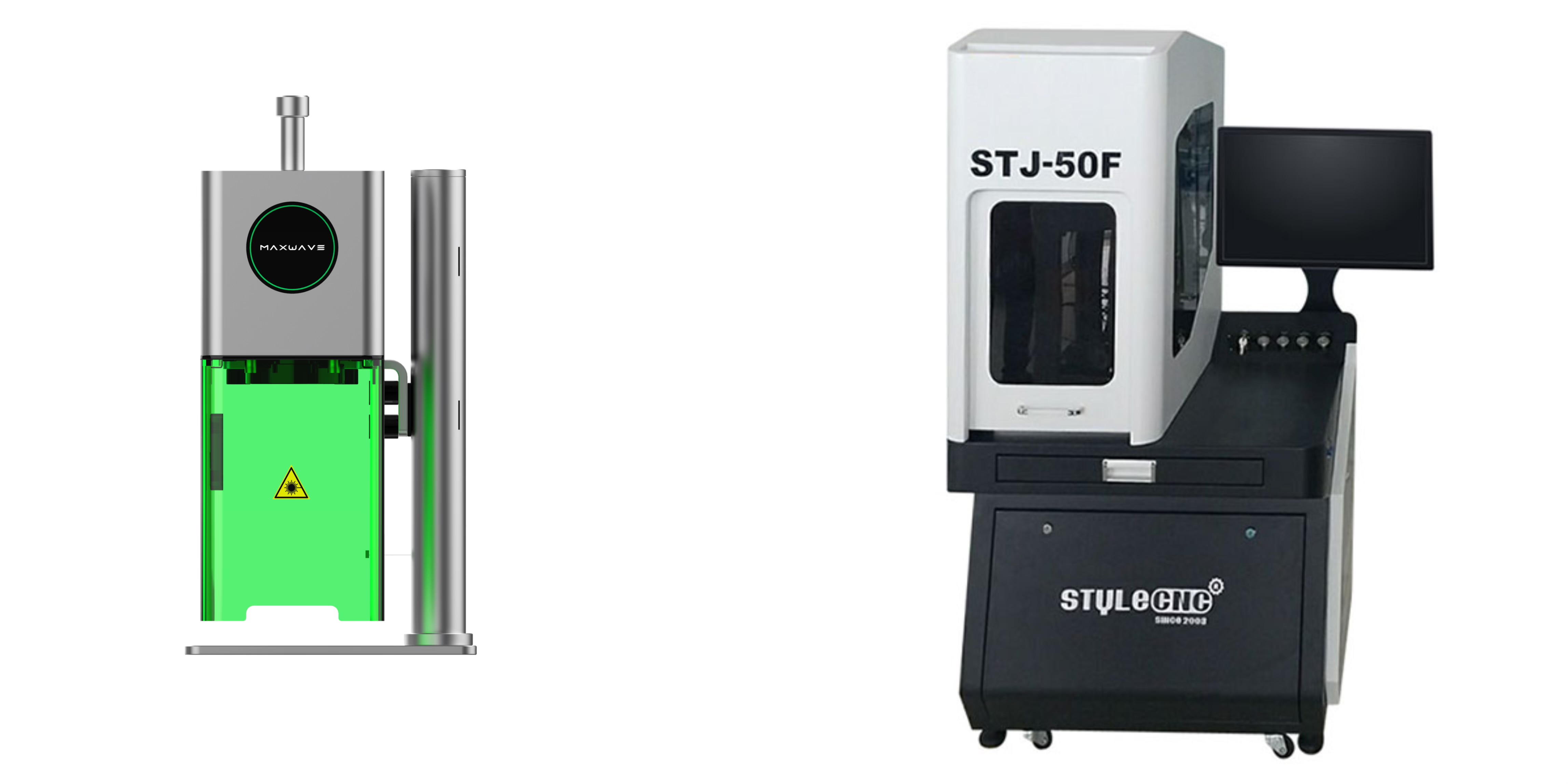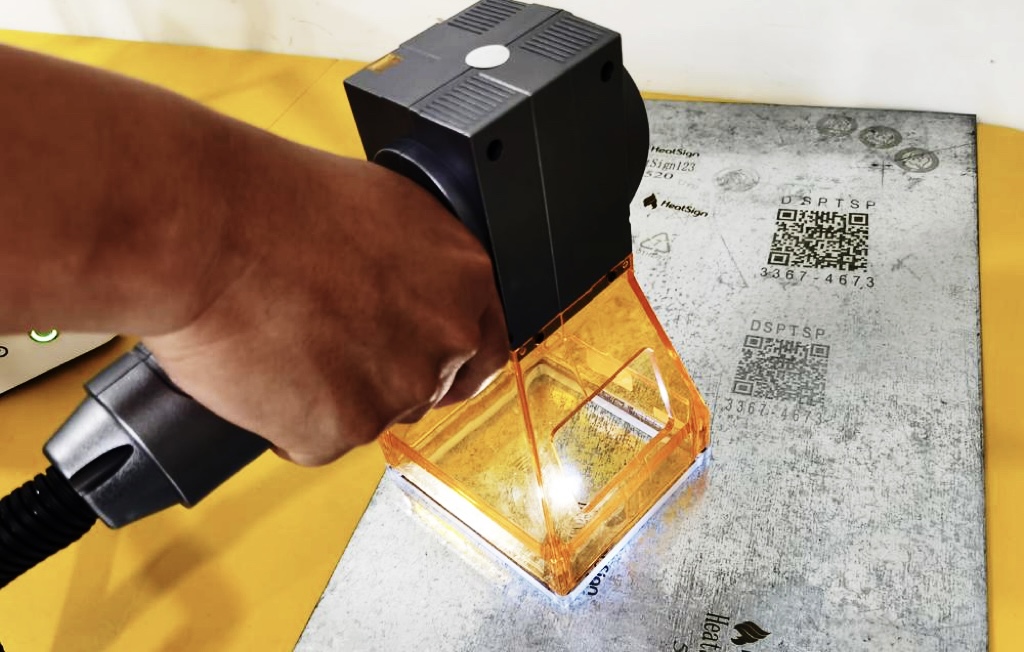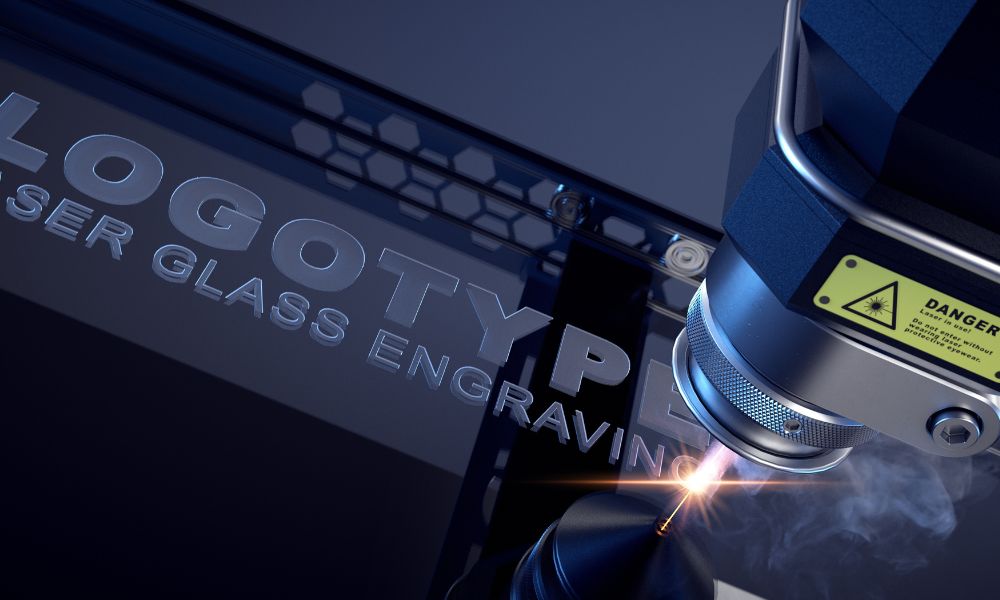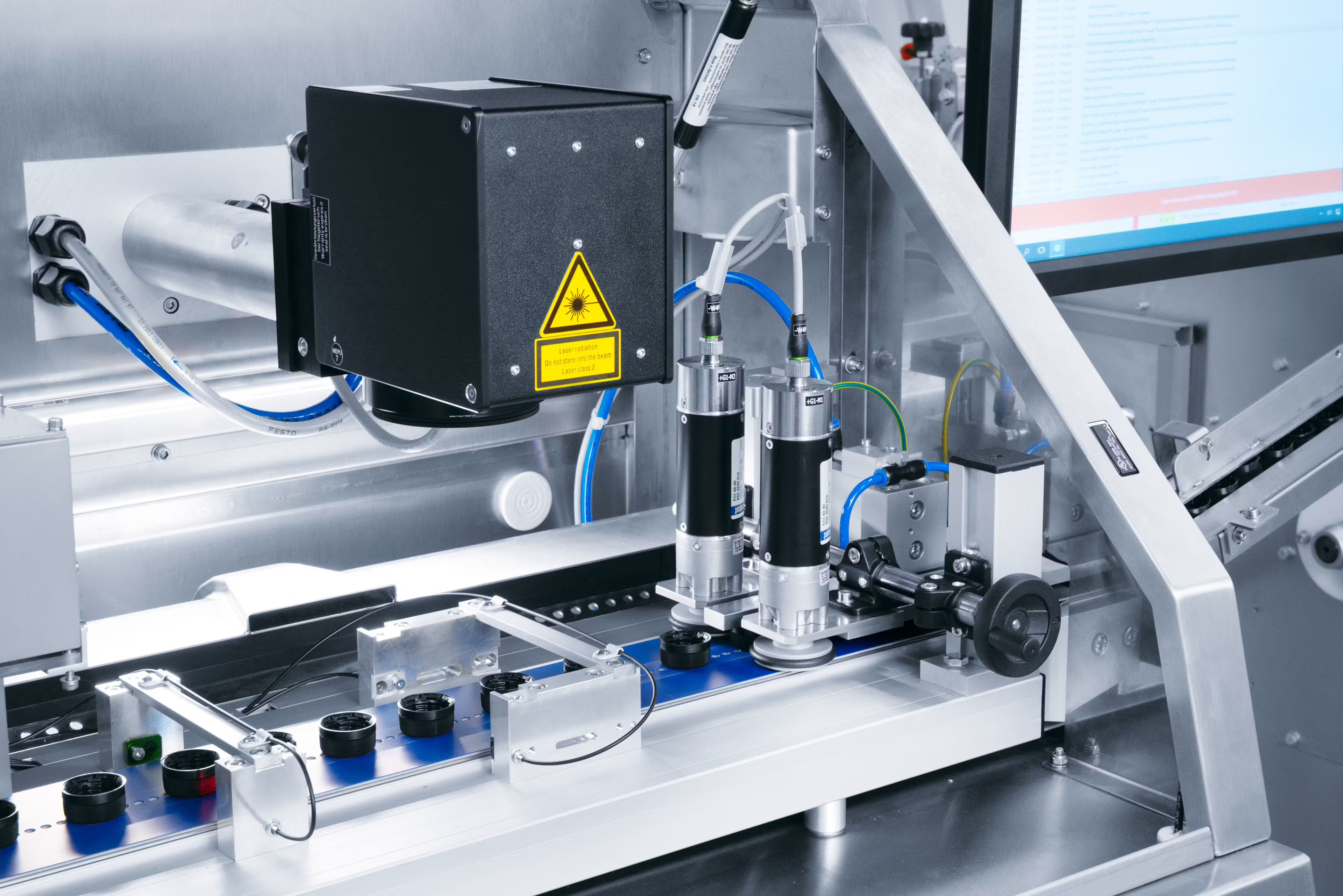In laser engraving, there’s no single solution that works for everyone. Portable and stationary machines each have unique strengths—and clear trade-offs. Portable units offer flexibility and mobility, making them ideal for on-site marking or handling oversized, hard-to-move objects. Stationary systems, by contrast, deliver greater power, speed, and precision, making them the preferred choice for deep engraving and large-scale production. This article takes a closer look at the benefits and limitations of both, so you can choose the option that best supports your workflow and business goals.
Portable vs. Stationary Laser Engravers: My Comparison
I’ve put together a table to compare portable and stationary laser engraving machines. I will cover the main features, costs, and best uses to help you make your choice.
| Feature | Portable Laser Engraving Machines | Stationary Laser Engraving Machines |
|---|---|---|
| Portability | These are light and easy to carry. I find them perfect for working at different sites. | These are heavy and stay in one place. You install them once in your workshop for good. |
| Setup & Operation | Setup is easy, just plug it in. Based on my experience, you won’t need much training. | Putting this together is more involved. It needs careful calibration, so you’ll need a skilled technician. |
| Marking Area | The engraving area is often limited. Common sizes are from 100mm × 100mm to 200mm × 200mm. | It gives you a large work area. Some are as big as 5′ × 10′ (1524mm × 3048mm) or even larger. |
| Automation | You operate this machine by hand. It’s difficult to add to an automated production line. | This machine connects well with automated systems and factory lines. |
| Precision & Consistency | It’s reliable for most small to medium jobs. I’ve seen advanced models hit speeds of 10,000 mm/s. | I recommend this for top precision. It gives you the same result every time on demanding tasks. |
| Power Range | Common power levels are 20W, 30W, and 50W. Some models can go up to 100W. | Power options start at 20W and go beyond 300W for industrial work. |
| Material Compatibility | It works on metals, plastics, and some other non-metals. | You can use this on a wider range of materials. It marks metals, plastics, glass, wood, stone, and more. |
| Cost | The starting price is low. Most models cost from $1,200 to $5,000. | You will need a larger budget for this one. Prices start at $3,000 and go up to $70,000+ for some setups. |
| Maintenance | I find these need more upkeep. Moving them around creates a higher risk of damage. | These are built strong for long jobs. In my opinion, they need less routine maintenance. |
| Power Source | It plugs into a standard wall socket. You will seldom find a battery-powered one. | This needs a stable, high-capacity power source from your facility. |
| Example Models | MaxWave MW-F25CA ($1,200)mport GP 50 ($3,000) | STYLECNC 150W Fiber Laser (up to $70,000). |
| Best Suited For | I suggest this for short projects or fieldwork. It’s great for small to medium businesses. | This is my choice for mass production. It handles high volumes and precision work for big industries. |
| Key Limitations | Its work area is small and it has less automation. It needs an outlet and is not great for large batches. | It needs a lot of space and money. It can’t be moved, and the setup is for experts. |
Benefit of Portable Laser Engraving Machines: Easy to Move and Transport
Based on my experience, portable laser engraving machines are the best choice when you need mobility.
They have a lightweight and compact design. I’ve seen models that weigh just 6 to 10 kg, with some marking heads as light as 1.25 kg. This makes them perfect for fieldwork or busy production floors. Many models, like the MaxWave MW-F25CA, can be used for handheld or desktop engraving. I find this makes it easy to set up the machine anywhere you need it, from a workshop to a remote job site.
Seamless On-Site Marking
I think the biggest advantage is that you bring the laser to the object. You don’t have to move the object to the laser.
Industries such as railway, aerospace, and shipbuilding use these machines. They can mark huge components right where they are. I’m talking about parts like oversized bearings, train wheels, turbines, and engines. You don’t need to move heavy or installed items around your facility. This saves a lot of labor and cuts down on production time. For instance, marking a part that is already mounted becomes a simple and quick task.
Space-Saving and Versatile
These portable units don’t take up much room. This helps save precious space in a crowded workshop or a mobile repair van.
I also suggest them for their flexibility. One machine can serve several production lines or repair areas. This allows a company to get the most use out of a single piece of equipment. The machines plug into standard wall outlets. They can also mark many different materials, like metals, plastics, glass, and special alloys. I believe this makes them a great fit for many jobs, from tracking parts to working outdoors.
Flexible Operation Across Industries
In my experience, certain industries get a lot of value from this mobility. These include:
– Heavy equipment and manufacturing (for marking large static parts)
– Energy (wind or hydropower turbines)
– Transport and logistics (direct marking on installed components)
– Packaging, jewelry, hardware, and nameplates
Field teams can quickly set up at a new job site. They can perform mobile installations, make repairs, or move between production lines as work changes. This ease of movement helps businesses work in tough or remote locations. I recommend it for any situation where you need to be flexible and get running fast.
Limitation of Portable Laser Engraving Machines
Power Limit
Lower Power and Limited Marking Depth: Most portable laser markers are 20W–30W, while stationary models reach 50W–100W or more. The lower power of portable machines means shallower marks (about 0.5 mm, up to 1 mm on metal) and slower operation, since they need longer passes. In contrast, higher-power stationary systems can engrave deeper (1.5 mm+) and work faster.
Limited Capability for Demanding Tasks: Portable models aren’t suited for deep engraving or large batches—their lower power makes them too slow and shallow for industrial-scale work. Their slower line speeds also limit efficiency when quick marking is needed.
Usage Scenarios and Typical Applications: Portable machines are great for light-duty jobs. I use them for things like serial numbers, barcodes, and simple IDs on metal or plastic. I would not recommend them for these tasks: – Applications that need deep, long-lasting marks – High-volume, fast production lines – Marking very hard or thick materials that need a deep mark.
Portable models give you a working area of 110 × 110 mm to 220 × 220 mm. I find this ideal for marking large, awkward, or fixed objects. The tradeoff you accept is less power and a shallower mark. If your job requires fast, deep, or mass marking, I suggest a stationary, high-power system. They are the ones built for that kind of performance.
As I see it, picking a portable laser is a balance. You trade marking depth and power for convenience and flexibility. In my view, for any serious industrial marking, you need a stationary machine.
Smaller Work Area and Limited Material Handling
What You Can and Can’t Mark: Portable laser engravers have small marking fields (around 140mm), so larger objects or sheet materials require multiple repositionings, slowing work and reducing precision. They’re also inefficient for batch processing since they can’t mark many items at once, making them unsuitable for high-volume production.
Limitations in Production Flow: Portable laser markers lack automation—no motorized X-Y tables, fixtures, or conveyor integration—so results depend on hand control, making consistency difficult. They also struggle with irregular, heavy, or fragile parts, often causing blurry or uneven marks, and cannot integrate into automated production lines like stationary systems.
Where Portables Fit—and Where They Don’t: Portable lasers are best for small tasks like marking serial numbers or QR codes on tools and labels, and their 20–30 lb weight makes them convenient for mobile use. However, they lack the power and capacity for industrial jobs like large plates, auto parts, or signage—where stationary systems with bigger fields and automation are the better choice.
Practical Summary
Here is my practical summary. Portable laser marking machines are great because they are mobile and easy to access. I believe their small marking area and need for manual handling make them impractical for large-scale or high-precision jobs. They are not competitive for batch production. If you need to mark complex, oversized parts or integrate with a manufacturing line, I suggest you choose a stationary laser system. It performs much better for those tasks.
Why Stationary Laser Engraving Machines Are Great
Handling Big or Automated Parts
From my experience, stationary laser engraving machines are the best choice for large or automated parts. They are built strong, have large work areas, and connect well with automated systems. I recommend them for tough production jobs.
Handle Larger Workpieces with Flexible Platforms: Stationary systems offer much larger engraving areas (110 × 110 mm up to 400 × 400 mm+), with models like the OMTech 20W providing 175 × 175 mm and industrial machines offering custom sizes. Features like removable side doors allow easy marking of long items, while enclosed setups such as the LaserTower series add safety with fume extraction. Their heavy, floor-standing builds (up to 650 lbs) also ensure excellent stability and precision for valuable parts.
Improve Production with Automation: A key advantage of stationary laser markers is automation. They handle batch processing to boost output, integrate with rotary tables, shuttles, and conveyors to cut downtime, and even offer full automation with feeders and indexers for high-volume serial jobs. Their flexible software can store tens of thousands of programs and run custom routines for images, barcodes, serial numbers, and logos, making them ideal for serialized production.
Industrial Uses and Examples: – You can mark many different materials, including metals, plastics, and even textiles. I think this flexibility is crucial for industries needing compliant markings. Think of automotive VINs, medical device IDs, and electronic parts. – I often find stationary machines on factory production lines. They fit right into automated workflows. This setup supports nonstop, high-speed, and precise marking. It’s something manual or portable units just can’t match.
In summary: Based on my experience, if you need to mark large, heavy, or many parts at once, I recommend a stationary laser marker. They are also the best choice to connect with an automated production line. These machines offer great efficiency and capacity. Their stable build, advanced safety features, and flexible programming make them a smart choice for any serious industrial marking job.
Fixed Space and Big Size
Based on my experience, stationary laser markers have two main drawbacks. They need their own fixed spot and take up a lot of room. This makes them a poor fit for factories that change their layout often.
You Need a Dedicated Spot: Stationary laser markers require a fixed setup and dedicated workshop space. Even compact models need at least 4 sq. ft., while advanced systems with rotary tables or conveyors need much more. Once installed, they’re difficult to move, so planning a permanent, safe production area is essential.
Problems with Workflow and Flexibility: Integrating a stationary laser into your workflow can be challenging—large models with add-ons require careful planning and are difficult to relocate, often needing professional help and downtime. They also lack flexibility; if you need to mark products in different locations, a fixed unit will slow you down.
Complex Setups and Large Size: Fully equipped stationary machines are large and heavy due to added parts like safety enclosures, cooling systems, and electronics. Even the marking head alone can weigh 18 kg, with the controller adding another 9 kg. Simple models still need a solid, fixed spot, while bigger production units with feeders or conveyors require dedicated floor space and climate control.
Real-World Examples: – LaserTower Desktop and Compact: These take up only 4 sq. ft., but you still must install them in a fixed spot. – Rotary indexing systems: I have seen that if you add large rotary tables, you need even more space. – Industrial setups: Big marking units with feeders or conveyors are very large. They can take up a whole section of a workshop.
My Take: Who Should I Recommend These Machines To?
In my opinion, because of the space and setup needs, stationary laser engraver are best for one specific job: high-volume production lines. They are great in a stable factory setting. But if you think your factory layout might change, I do not recommend them. If you need to mark items outside the factory, I suggest you look at portable options, which are much more flexible.
Higher Initial Investment Cost
In my experience, stationary laser engravers have a much higher initial investment cost than portable ones. I find this is a major hurdle for many small businesses or startups looking at stationary models.
Upfront Costs and Price Ranges: Stationary laser markers require a much higher upfront investment than portable ones, which can be a barrier for small businesses. Standard desktop models range from $3,000–$10,000, while advanced industrial systems with added features can exceed $50,000. Beyond the machine, you also need ventilation, safety enclosures, workspace setup, software, and materials—bringing total startup costs to about $2,850–$16,500 or more, depending on requirements.
Summary
Choosing between a portable and a stationary laser marker isn’t just about features—it’s about finding the right fit for your growth. If you need mobility and quick on-site marking, a portable model will serve you well. But if you’re aiming for deeper marks, faster throughput, and industrial-scale production, a stationary system can transform your efficiency and output. The best investment is the one that matches your long-term vision—so whether you’re just starting out or scaling up, the right laser marking machine can be the key to unlocking new opportunities for your business. Ready to learn more? Contact us now for expert advice on laser engraving machines.





